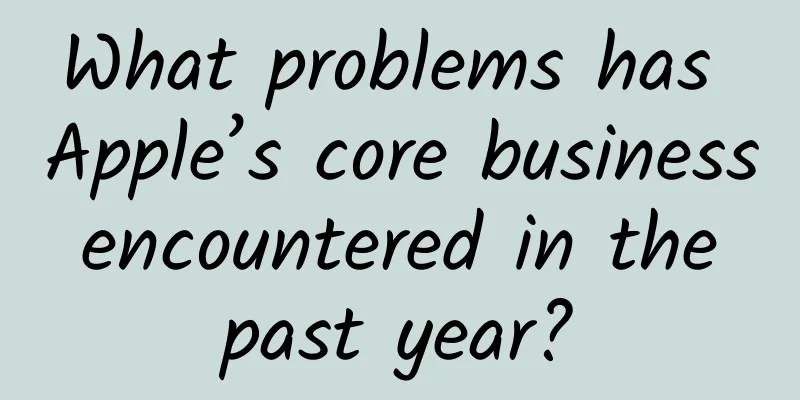Why do many smokers not get lung cancer?

|
Smoking is the number one risk factor for lung cancer, and tobacco products cause up to 90% of lung cancer deaths in the United States alone. Without a doubt, the safest way to protect yourself from lung cancer is to avoid smoking. But at the same time, it is also true that not all smokers are destined to develop cancer. So the question is, why do most smokers not get lung cancer? If so, why should I quit smoking? I may not be the one to get lung cancer. Today, let’s discuss this issue. Some smokers do not develop lung cancer because they have powerful mechanisms that protect them from lung cancer by limiting cancer-causing mutations, according to a study published in Nature Genetics not long ago. That is, some people can live long and healthy lives despite heavy smoking because their bodies manage to suppress further accumulation of mutations caused by smoking. This suppression of mutations may be due to these people having very strong systems to repair DNA damage or detoxify cigarette smoke. However, this does not mean that smoking is harmless. On the contrary, this study scientifically confirms that smoking increases the risk of lung cancer by increasing the frequency of cell mutations. The reason why those who smoke for a long time or heavily do not develop lung cancer may simply be because their bodies are "special" or they are simply "lucky". (Source: Pixabay) As senior author Simon Spivack, professor of medicine, epidemiology and population health, and genetics at Albert Einstein College of Medicine, said, "This may prove to be an important step toward prevention and early detection of lung cancer risk, moving away from the current arduous efforts required to fight late-stage disease, when the majority of health care costs and suffering occur." It's like alcohol is a first-class carcinogen, but some people's genes make them have a stronger ability to "sober up", so some people who drink alcohol for a long time will not necessarily develop liver cancer, stomach cancer, etc., but some people's ability to "sober up" is relatively weak, so the harm of drinking is greater and the risk of cancer is higher. This discovery for smokers can help identify those smokers who are at higher risk of disease so that they can be monitored especially closely, especially avoiding behaviors such as smoking to reduce their risk of cancer. Smoking, mutations, and lung cancer Smoking has long been thought to cause lung cancer by triggering DNA mutations in normal lung cells. "But this had not been possible to demonstrate until our study because there was no way to accurately quantify mutations in normal cells," said Jan Vijg, co-corresponding author of the study and professor of molecular genetics at the Single Cell Omics Center at Albert Einstein College of Medicine and Shanghai Jiao Tong University School of Medicine. Several years ago, Dr. Vijg overcame this obstacle by developing an improved method to sequence the entire genome of a single cell. Single-cell whole-genome sequencing methods can introduce sequencing errors that are difficult to distinguish from true mutations—a serious drawback when analyzing cells containing rare and random mutations. Vijg et al. addressed this problem by developing a new sequencing technology called single-cell multiple displacement amplification (SCMDA), which can account for and reduce sequencing errors, as reported in Nature Methods in 2017. To explore the deeper connection between smoking, mutations and lung cancer, researchers at the Albert Einstein College of Medicine used SCMDA to compare mutations in normal lung epithelial cells from two types of people. "These lung cells can live for years or even decades, so they accumulate mutations with age and smoking," Spivack said. "Of all the lung cell types, these are the most likely to become cancerous." (Source: Albert Einstein College of Medicine) The study subjects included 14 never smokers, aged 11 to 86 years, and 19 current smokers, aged 44 to 81 years, who smoked up to 116 packs per year (one pack/year equals one pack of cigarettes per day per year). First, the researchers found that mutations (single nucleotide variations and small insertions and deletions) accumulated in lung cells from non-smokers with age, but more mutations were found in lung cells from smokers. The researchers said this experimentally confirmed that smoking increases lung cancer risk by increasing mutation frequency, as previously hypothesized. This may also be one of the reasons why few non-smokers develop lung cancer, while 10% to 20% of lifelong smokers will develop lung cancer. Note that here it is clearly demonstrated that smoking increases lung cancer risk by increasing mutation frequency and explains why 10% to 20% of lifetime smokers will develop lung cancer, while non-smokers rarely develop lung cancer. (Source: WHO) Another finding of the study was that the number of cell mutations detected in lung cells increased linearly with the number of cigarettes smoked, and presumably the risk of lung cancer did increase. But interestingly, the rise in cell mutations stopped after exposure to more than 23 packs of cigarettes per year. That is, heavy smokers do not necessarily have a persistently increased mutational burden. The data suggest that these individuals may have survived so long despite their heavy smoking because their bodies managed to suppress further mutation accumulation. This mutational plateau may stem from the fact that these individuals have very skilled systems for repairing DNA damage or detoxifying cigarette smoke. This also explains why some smokers do not get lung cancer. Therefore, for this academic study, the researchers concluded that this discovery leads to a new research direction. "We now hope to develop new tests that can measure someone's DNA repair or detoxification ability, which could provide a new way to assess lung cancer risk," said Vijg. Here's another reason to quit smoking World No Tobacco Day was founded by the World Health Organization in 1987. The first World No Tobacco Day was on April 7, 1988. Now May 31st of each year is World No Tobacco Day. The purpose of World No Tobacco Day is to promote the concept of not smoking. Every year there is a central theme, which represents a topic that deserves special attention in terms of tobacco and non-smoking in that year. Different types of publicity activities will be held around the world on that day in response. The World Health Organization has announced that the theme of the 2022 World No Tobacco Day global campaign is "Tobacco: a threat to our environment". The campaign aims to raise public awareness of the impact of tobacco growing, production, sales and waste on the environment. This will give tobacco users an extra reason to quit. (Source: WHO) The tobacco industry produces greenhouse gas emissions equivalent to 84 million tonnes of carbon dioxide each year. It exacerbates climate change, reduces climate resilience, wastes resources and damages ecosystems. Every year, about 3.5 million hectares of land are destroyed for tobacco cultivation. Tobacco cultivation leads to deforestation, especially in developing countries. The practice of clearing forests for tobacco cultivation contributes to soil degradation, making the land less able to support the growth of other crops or vegetation. “The environmental impact of smoking adds unnecessary pressure on our planet’s already scarce resources and fragile ecosystems,” said Dr Ruediger Krech, Director of the World Health Organization’s Department of Health Promotion. “This is particularly dangerous for developing countries, where most tobacco production takes place. With every cigarette you smoke, you are burning already scarce resources, which we all depend on for survival.” The environmental burden falls on the countries least able to cope, while the profits go to multinational tobacco companies headquartered in high-income countries. With approximately 90% of tobacco production concentrated in developing countries, tobacco has a highly uneven impact on different socioeconomic groups. In low- and middle-income countries, many farmers and government officials view tobacco as a cash crop that can bring economic growth, but the short-term cash benefits of this crop are more than offset by long-term consequences such as increased food insecurity, often persistent debt, disease and poverty among farmers, and widespread environmental damage in low- and middle-income countries. The tobacco industry also invests heavily in “greenwashing” its environmentally damaging practices, including reporting on environmental impacts and funding corporate social responsibility projects and organizations in the environmental field. Their smokescreen does work, due to the lack of objective data and limited and inconsistent legislation at the international and local levels. A story Finally, let's tell a story about tobacco—— In 1558, sailors who sailed to South America brought tobacco seeds back to Europe. European colonists planted tobacco on a large scale and started the tobacco trade, and tobacco consumption spread throughout the world. For more than four hundred years, people firmly believed that smoking this highly addictive substance was good for health. Even in the United States in the 1950s, a large number of passionate propaganda about "smoking is good for health" could still be seen in color inserts in magazines across the country. In 1950, two scholars published an article titled "Smoking and Lung Cancer" in the British Medical Journal (BMJ), linking smoking and lung cancer for the first time. In the following 70 years, people from all walks of life around the world have been engaged in a long-lasting tug-of-war and struggle over tobacco between science and superstition, health and interests. Figure | As we all know, tobacco companies cannot advertise, but they can spend money to show that "smoking is cool", which has become an open secret of the highly profitable tobacco industry Until today, "smoking is harmful to health" has become the global medical community's conclusion and the consensus of the whole society. But even so, if you want to persuade a smoker on the street today, you still risk being beaten. According to statistics from the World Health Organization, today there are still 1 billion smokers out of a global population of 7.5 billion, of which China has 316 million smokers, ranking first in the world. Every year, Chinese smokers consume about 50 million cartons of cigarettes, accounting for 44% of the world's tobacco market. Correspondingly, about 8 million people die from smoking every year, and hundreds of millions of people suffer from cancer, chronic respiratory diseases and cardiovascular diseases due to tobacco. In China, as the country with the largest cigarette consumption in the world, tobacco-related diseases cause 1.1 million deaths each year. References: https://www.nature.com/articles/s41588-022-01035-w https://www.nature.com/articles/nmeth.4227 https://www.who.int/en/campaigns/world-no-tobacco-day https://einsteinmed.edu/news/4756/study-suggests-why-most-smokers-dont-get-lung-cancer/ https://www.sciencealert.com/we-re-closer-to-understanding-why-most-lifelong-smokers-never-get-lung-cancer https://www.usnews.com/news/health-news/articles/2022-04-13/why-do-some-smokers-never-get-lung-cancer |
<<: Why do yellow clothes attract more flying insects?
>>: Can the termites flying all over the sky be fried and eaten?
Recommend
2,400 meters underground, the country's most important equipment is put into operation! Why is the world's deepest and largest deep underground laboratory in Jinping?
On December 7, the civil engineering and public w...
When the weather gets hot, does your blood pressure quietly drop? Don’t be careless when high blood pressure turns into low blood pressure!
Recent hot weather On and off During this period ...
Do drugs have "left and right hands"? The mysterious mystery of chirality
The internationally renowned journal "Journa...
Addicted to cats? The reason why cats are so popular is →
It is said that "it is fun to pet cats, and ...
6 secrets to achieve explosive growth at low cost
Why should I spread your activity? Why should I b...
Red Magic Mars phone: the leading gaming device, priced at 3,000 yuan and offering an experience of 8,000 yuan
Nowadays, the mobile gaming and e-sports industry...
Do dogs also have their periods? What should you do when they do?
A few days ago, a dog owner found that his dog ha...
Is it true that a mad dog bite will cause the patient to make a barking sound? Is there any cure for this disease?
If you are bitten by a mad dog and don't get ...
How to deal with snowstorms?
On December 9, rain and snow "moved" to...
How to create Douyin video accounts in batches, how to edit videos and movies, how to monetize them with products (with software)
The famous Lanshen Media is said to be not a trai...
【51CTO Network+】How to make a product that attracts users to call
According to relevant surveys, the average number...
Product operation: How to effectively increase click-through rate?
When UI designers are working on requirements, th...
Methods and strategies for new media operations to follow hot topics!
Is it useful to follow hot topics? In this articl...
Learn about the Longevity Knowledge Report: Live Longer and Better
The World Economic Forum has released a new repor...
The romantic rise and fall of WeChat public accounts
[[247951]] Prequel On July 21, 2012, Beijing, whi...









